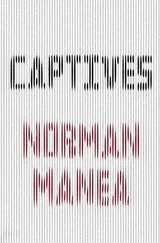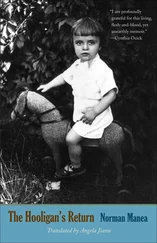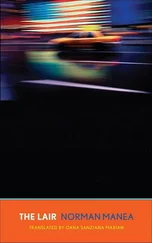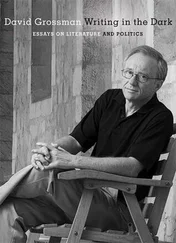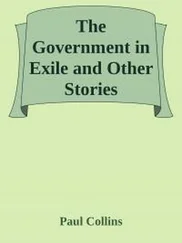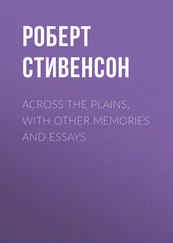Although I had a different interpretation I find this one to be very interesting, subversive, and not unfounded.
Obviously, the class had not been apathetic at all. Nor was it lacking in suppleness of perception.
The East European also had something to learn, as it were, from his students’ spirit of fair play.
I kept in touch with Nancy after she was no longer my student and even later when, having received a master’s degree in fine arts from Bard, she went to Japan, where she taught English for a while.
I also kept in touch with her paper. In 1996, I had the opportunity to subject her thesis to a re-evaluation.
Many things have changed with regard to Ionescu over the years. An open adversary of Romanian nationalism, he was condemned immediately after the war, before communists took complete power, for “insults” against the state and the nation. He had indeed expressed his disgust for the Army, the Church, the Law, demagogy, immorality, the tyranny of the parvenu, and yet again, the “angellike figures of Romanian nationalism.” But also for the “refined” intellectuals, fascinated with the base nature of the Beast.
He did everything to escape his rhinocerized homeland:
Anything could have happened. I could have died; I could have been convicted; I could have become a dog too; I could have been possessed by the Legionaries’ devil. When I left the country, I had the feeling I had saved myself from fire, earthquake, ocean waves, whirlpools …. It seems to me I had not seen people for a long time. I was awakening from a nightmare; I was escaping from hell …. Everything is fine when the nationalistic homeland is far away.
His work, which was banned under Stalinism, was briefly recovered during the interval of “liberalization” in the mid-1960s, due to his “humanism” and “antifascism.” Later on, it was exiled again because of its antitotalitarian subversiveness and the author’s intransigence toward the Carpathian Clown’s dictatorship. Published again in their entirety after 1989, his writings have remained a source of perplexity and suspicion for any “national” institution and also for some consumers of pop-cultural products.
Ionescu’s death, in 1994, sanctioned not his return to his native country, but his separation from a whole world that was no longer his.
To the very end he had been a fierce enemy of death in all its forms. He kept dreaming of avoiding the unavoidable. “The truth is to be found in the imaginary,” he repeated. While constantly reasserting his Christian faith, he never failed to add that “I could never believe enough …. I am like the one who prays daily: Lord, make me believe …. The truth is in the imaginary.” In the end, he resigned himself, as revealed by his will, which Le Figaro published the very day he died: “Perhaps there will be joy afterwards ….”
In the years following the collapse of the Wall between the two Europes and the two worlds, Rhinoceros had garnered not only the well-known antitotalitarian meaning but also a “democratic” and “American” connotation — in the light of the new wars between sexes and minorities of all kinds, each group fighting for a distinguished and privileged identity.
Class and race struggles had been replaced by other conflicts and slogans …. This was no longer about absolute, totalitarian oppression, it was about militant simplifications, not reflecting greater tolerance of insecurity, vulnerability, imprecision, ambiguity, and skepticism. The horn of rhinoceritis can be recognized today in the party membership card or badge, in the fundamentalists’ cross, star or crescent, but also in the extreme ideologization of difference.
Seven years had passed, as in the stories of prophecy. The lost one, the wanderer, was still at Bard. The green and the red Rhinos had gradually moved on, and his homeland, still not immune to old and new types of rhinoceritis, had receded farther and farther into the distance. Yes, the exile was in the same place, but less exiled than before. Moving away from his former biography proved beneficial more than once; the exile Eugen Ionescu had been right.
In 1996, the class at Bard no longer resembled that of seven years earlier. Soon after the fall of communism in Eastern Europe, the college had initiated a program of academic exchanges, and every year a number of East European students had come to Bard to study for two semesters.
During the 1996–97 academic year, I was teaching a course entitled “Danube — A Literary Journey.” This time Ionescu was accompanying his fellow writers Musil and Kafka, Koestler and Krleza, Ki  and Canetti. The literary journey along the Danube dealt with “Central European” authors; in their books, we were trying to discover the spirit of “Mitteleuropa” in relation to the everchanging reality of here and there.
and Canetti. The literary journey along the Danube dealt with “Central European” authors; in their books, we were trying to discover the spirit of “Mitteleuropa” in relation to the everchanging reality of here and there.
The class was almost equally divided between American and East European students. From the very beginning, the seminar discussions benefited from the stimulating tension between the “subtlety” characteristic of the Old World and the open, realistic, efficient “practicality” of America.
Ionescu’s metaphor seemed shocking to the Americans and already partly “outdated” to the Europeans. The voluble student from Tbilisi argued that Beckett’s plays seem more radical to him than Ionescu’s because the Irish author accepted no compromise with the so-called humanism of hope, while the female Czech student saw in the Logician’s rhinocerization a necessary “liberation” from the monomaniacal idiocy of ignoring reality.
I promptly recalled the image of Ionescu as he appeared in 1979, when I first met him. It was the same image evoked more than half a century before by Mihail Sebastian, his friend and a friend of his friends, whose rhinocerizing delirium these two contemplated together in Bucharest in the 1930s and 1940s. “I can’t get used to life …” the playwright who found it even harder to get used to death seemed to say in 1979, just as in 1941. Then, listening in Cismigiu Park in Bucharest to a broadcast of a speech by the Great mustarchioed Rhinoceros from Berlin, Berenger had turned pale, then white, and fled in terror. “I can’t! I can’t,” he was whispering, terrified by the besieging barbarism around him.
I gave up my initial idea of discussing the significance of the rhinoceros in the imagery of antiquity with my class. I had been going to talk about Alexander’s apocryphal letter to Aristotle (quoted in Flusser’s memorable book Judaism and the Origins of Christianity, 1988), in which the unusual animal, larger than an elephant and with three horns, is evoked by the name the Indians gave it: “odontotyrannos.” The fabulous apparition is also mentioned in the writings of the neo-Pythagorean Philostratus and, even before him, in the Jewish apocalyptic literature and in the Book of Daniel 7:7 where the monstrous “odontotyrannos,” seen with the same eschatological horror and fear, embodies — in its “steel teeth and bronze claws”—the all-destructive force the modern tyrants would regenerate with renewed vitality. I was not at all sure that such pedantic clarifications would not bore my audience.
But the provocative, unconventional pages of the student of seven years earlier could be useful again, I believed. I therefore tried the “Nancy test” on the new class too. The grades she had received in 1989 from her fellow students were not very different from those given by their successors in 1996. Nor were the commentaries too different either:
Her arguments seem to be well-supported, her indulgence can be justified. The paradox she depicts coming from the hero’s fear of change which then also necessarily means a reabandonment from the society the same way as in the nonrhinoceros one, is very well posited.
Читать дальше
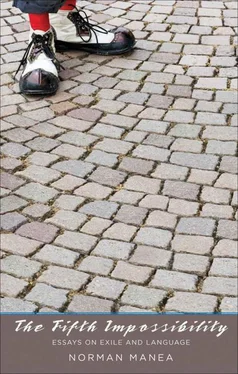
 and Canetti. The literary journey along the Danube dealt with “Central European” authors; in their books, we were trying to discover the spirit of “Mitteleuropa” in relation to the everchanging reality of here and there.
and Canetti. The literary journey along the Danube dealt with “Central European” authors; in their books, we were trying to discover the spirit of “Mitteleuropa” in relation to the everchanging reality of here and there.